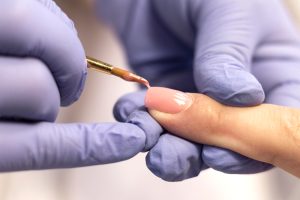Endocrine-disrupting chemicals (EDCs) are a silent menace that infiltrates our daily lives, impacting our health in subtle yet significant ways. These stealthy substances can interfere with our hormonal balance, leading to a myriad of health issues.
In Asia, where rapid industrialisation and urbanisation have intensified the presence of EDCs, understanding their sources, effects, and ways to reduce exposure is crucial. This article delves into the world of endocrine disruptors and their impact on Asia’s health landscape.
EDCs Unveiled: What Are They?
Endocrine-disrupting chemicals are substances found in various everyday items that can interfere with the endocrine system, our body’s network of glands and hormones. By mimicking or blocking the actions of hormones, EDCs can disturb the delicate balance that regulates essential bodily functions, such as growth, metabolism, and reproduction.
Sources of EDCs: Ubiquitous and Unseen
EDCs can be found in a multitude of everyday products, including plastics, personal care items, and pesticides. Some well-known EDCs include:
- Bisphenol A (BPA): Commonly found in plastic containers, water bottles, and food packaging.
- Phthalates: Used in plastic products, cosmetics, and fragrances to enhance flexibility and durability.
- Parabens: Widely used as preservatives in cosmetics and personal care products.
- Organochlorine pesticides: Previously used in agriculture, but now banned in many countries due to their persistence in the environment.
The Asian Connection: Industrial Growth and EDC Exposure
Asia’s rapid industrialisation and growing consumer demand have contributed to increased exposure to EDCs. A study published in the Journal of Hazardous Materials (2019) revealed that Asian countries, including China and India, have some of the highest levels of EDCs in the environment. Urbanisation, increased use of pesticides in agriculture, and improper waste disposal are key factors contributing to this alarming trend.
Health Implications: Hormonal Havoc
EDCs can disrupt hormonal balance, leading to various health issues. Additionally, research has linked EDC exposure to reproductive problems, developmental disorders, obesity, diabetes, and even cancer. In Asia, the increasing prevalence of these health conditions has raised concerns about the potential impact of EDCs on public health.
Reducing Exposure: Simple Steps for Healthier Living
While it’s challenging to eliminate EDC exposure, taking some practical steps can help minimise the risks:
- Choose glass or stainless steel containers over plastic ones, especially for hot food and beverages.
- Opt for natural, organic personal care products free of parabens and phthalates.
- Wash fruits and vegetables thoroughly to remove pesticide residues.
- Avoid using harsh chemical cleaning products and opt for eco-friendly alternatives.
Policy Measures: A Call for Action
Governments in Asia have started to recognise the dangers posed by EDCs and are implementing measures to mitigate their impact. For instance, China has banned certain EDCs in children’s toys, while India has phased out the use of certain organochlorine pesticides. However, more stringent regulations, public awareness campaigns, and better waste management practices are needed to reduce EDC exposure in the region.
Conclusion: Tackling the EDC Epidemic
Endocrine-disrupting chemicals pose a significant yet often overlooked threat to public health in Asia. Therefore, understanding the sources and effects of these chemicals is crucial to minimising exposure and mitigating their impact on our hormonal balance. By making informed choices, advocating for stricter regulations, and raising awareness, we can protect ourselves and future generations from the insidious effects of these stealthy substances.













